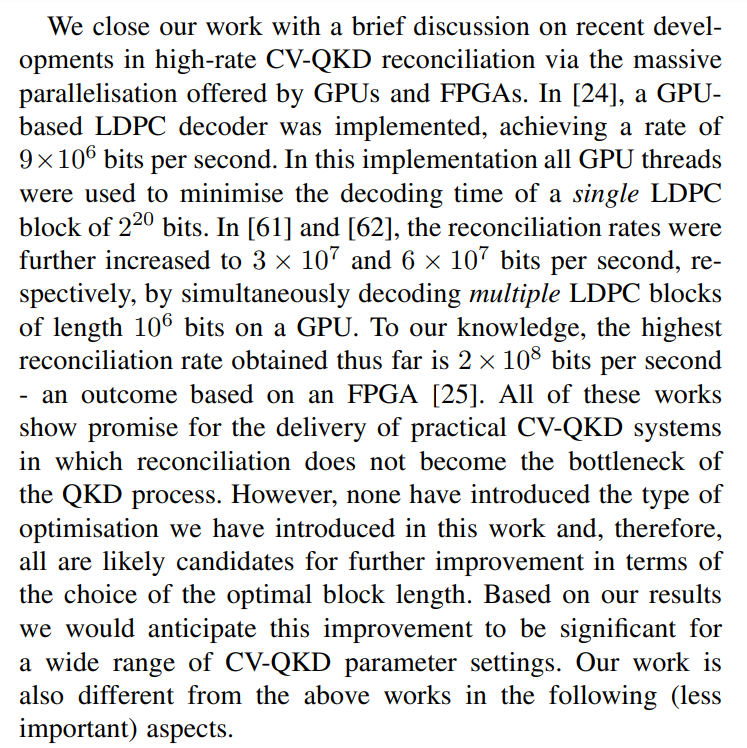[ad_1]
:::info
This paper is available on arxiv under CC 4.0 license.
Authors:
(1) Xiaoyu Ai, School of Electrical Engineering & Telecommunications, University of New South Wales, Sydney, NSW 2052, Australia;
(2) Robert Malaney, School of Electrical Engineering & Telecommunications, University of New South Wales, Sydney, NSW 2052, Australia.
:::
Table of Links
- Abstract & Introduction
- System Overview
- Overcoming the limitation of key reconciliation
- Final Key Rate
- Experimental Results
- Discussion
- Conclusion & References
- Appendix
VI. DISCUSSION
\

\
1) Reconciliation schemes for satellite-based CV-QKD. High-speed implementations realised in [61], [62] have used multidimensional reconciliation [37]. This multidimensional scheme is preferred for low SNR – but not so for the higher SNRs available via the Gaussian post-selection technique – a technique likely to be more useful in the satellite context [1].
\
2) Low probability of reconciliation failures. In CV-QKD, Alice and Bob have to discard a block of reconciled bits if they detect a reconciliation failure (coding error) for that block. To compensate for the discarded bits, additional quantum signals need to be transmitted and reconciled, causing unwanted delays. Such delays can be problematic for satellitebased systems since the satellite is not always visible to the ground station. The FPGA-based reconciliation of [25] may suffer from this problem due to limited precision of arithmetic operations leading to higher reconciliation failures. As shown in many GPU-based works (including this work), GPU-based reconciliation offers less probability of reconciliation failure.
[ad_2]
Source link

